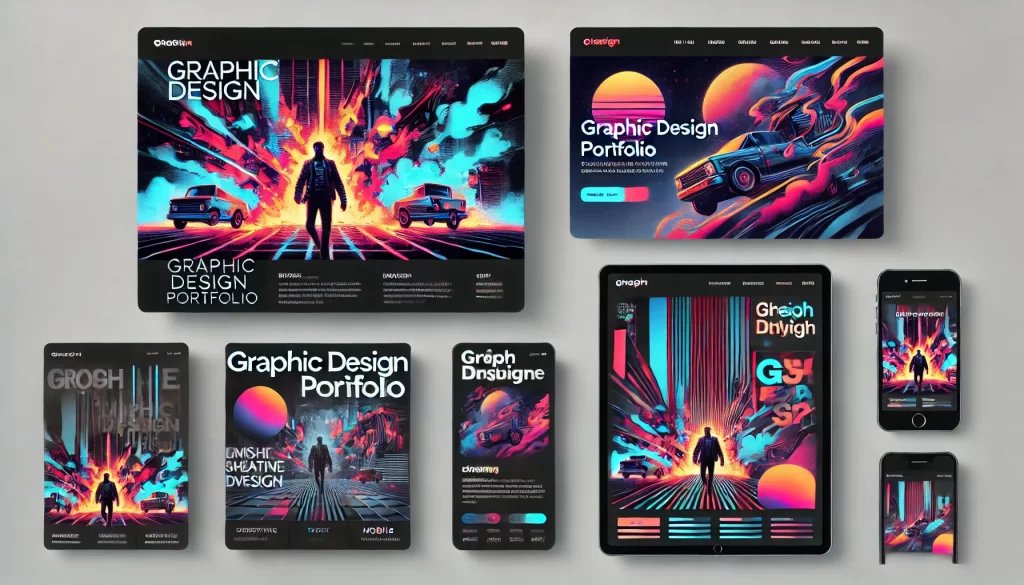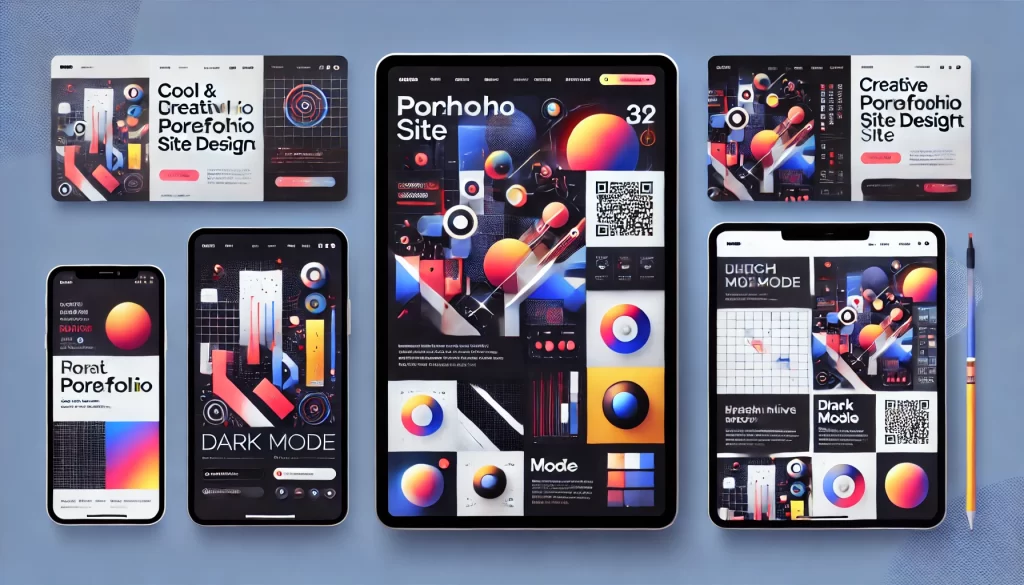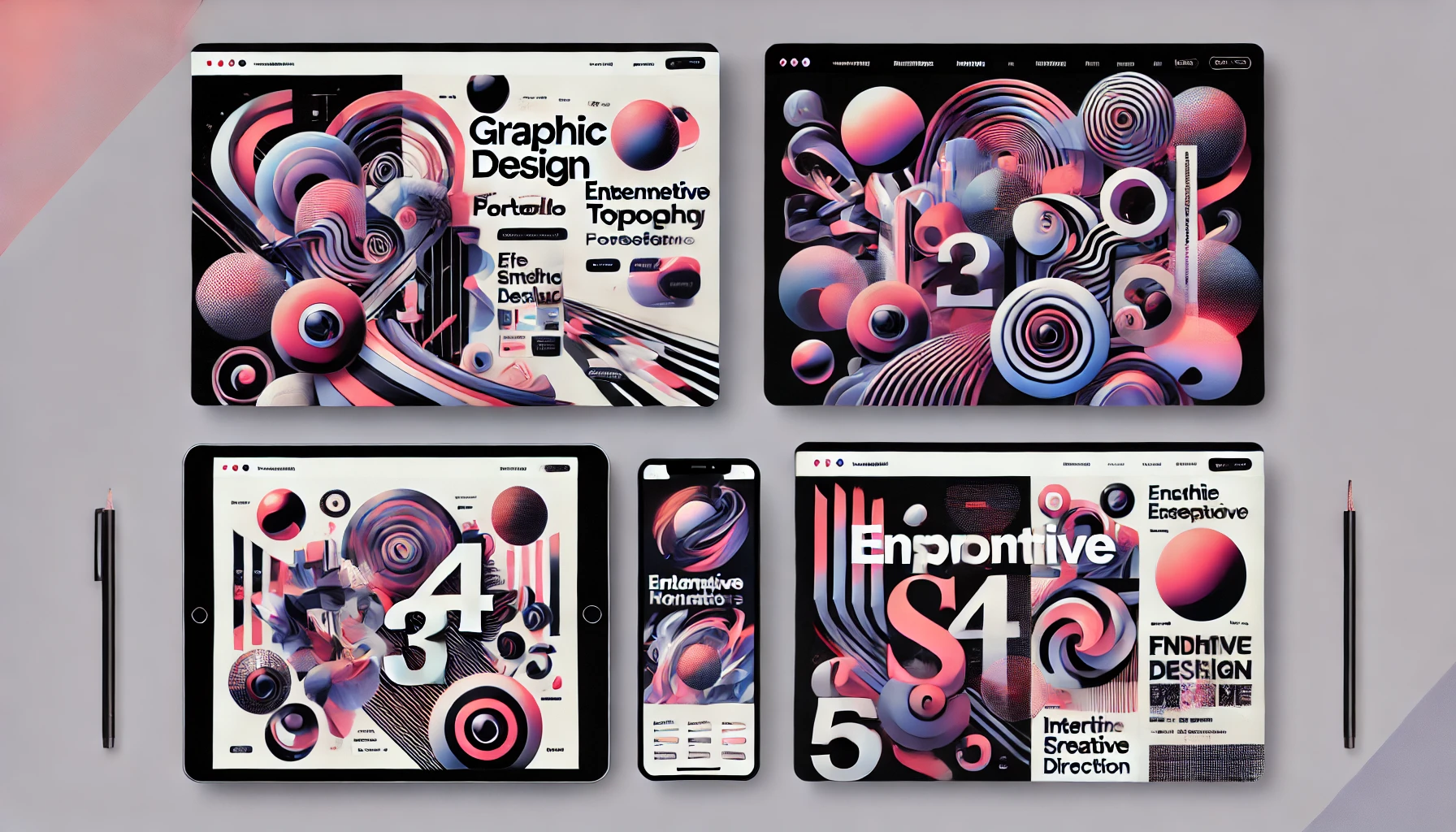When Safe is Boring – Why Bold Portfolios Win in a Crowded Space
In an endless scroll of beige minimalism, the creatives who dare to break the grid get noticed.
A portfolio site isn’t just a showcase it’s a statement. And for many in the design world, it’s the one place you don’t have to ask for permission to experiment.
In this post, I’m showcasing cool graphic design portfolios that stand out by doing things differently whether that’s brutalist typography, animated storytelling, or fully interactive layouts that feel more like experiences than websites.
These aren’t just visual flexes. They’re strategy-led, conversion-smart designs that tell you everything about the designer behind them.

Suggested Posts:
• Introduction to Real Estate Websites
• Future of Real Estate Websites
• Best and Top Real Estate Websites
What Defines an “Out-of-the-Box” Portfolio?
We’re talking about sites that do at least one of the following:
- Break conventional layout rules
- Use animation as narrative, not decoration
- Lean into unconventional UX or interaction
- Pair bold color, dark mode, or kinetic typography with restraint
- Turn storytelling into an immersive experience
These portfolios don’t ask “how should I design this?” They ask, “what would no one else dare to do here?”
Real-World Portfolio Examples That Push Design Forward
Pierre Nel – Animated Grid Meets Code-Centric Art Direction
Pierre Nel’s site greets you with a mosaic of images that animate as you scroll. No nav. No header. Just a full-screen interactive grid that shifts in response to movement.
- Parallax depth effects as you scroll
- Full-screen video backgrounds inside case studies
- Custom-coded transitions feel seamless
- Interaction is the navigation
You don’t navigate this site. You explore it.
Nana Murugesan – Dark Mode Meets Type Brutalism
A creative director with an eye for tension, Nana’s site is all black and bold. Grid-less layouts, oversized headings, and kinetic transitions set the tone fast.
- Custom dark mode that isn’t an afterthought—it’s the entire tone
- Typography is the layout
- Sections overlap and layer colliding more than stacking
- Built-in glitch hover effects that signal edge and confidence
This site doesn’t care about rules. It cares about vibe.
Suggested Posts:
• Trends in Real Estate Websites
• Real Estate Listings and Search Engines
• Marketing and SEO for Real Estate Websites
Rafael Derolez – UX + Experimental That Still Converts
Rafael’s site feels like a blend of Webflow magic and UX sensibility. Despite the flashy animations and scroll triggers, it leads you logically first to the work, then to the brief, then to the contact form.
- Rotating nav items hover as circular trackers
- Bold neon + black theme with flickering micro-animations
- Clear CTA contact is always 1 click away
- Works well on mobile without losing the drama
This is what happens when interaction design serves both art and usability.
A Quest of Evolution (AQuest) – Interactive Storytelling on Steroids
AQuest’s website isn’t a site. It’s a cinematic intro to their brand.
- Full-page animated scroll with synced audio
- Transitions that feel like chapter cuts
- No “pages,” just sections that transform as you move
- Real-time parallax scrolling and 3D interaction layers
It’s a digital rollercoaster and it works because the creative direction never breaks.
Cargo Collective Portfolios – Controlled Chaos That Captivates
This isn’t one site it’s an entire ecosystem of designers who push boundaries. On Cargo, you’ll find:
- Brutalist portfolios with monospaced type and grayscale tones
- Anti-grid layouts where each page feels like a zine
- Image stacking, off-grid nav, and hover-triggered text reveals
- Custom animated kinetic typography and scroll-linked transitions
Cargo gives experimental designers a home—and it shows.

Design Trends Fueling Experimental Portfolio Success
These are the aesthetic and UX shifts shaping great graphic design portfolios that don’t feel like everyone else:
- Brutalist Design – Sharp corners, unstyled links, raw texture
- Kinetic Type – Moving letters that react to scroll or mouse
- Scroll Hijack – Sites that animate based on how you scroll
- Layered Navigation – No nav bar; instead, floating labels or pinned project tiles
- Dark Mode with Color Pops – Full black backgrounds with punchy neon or minimal white text
- Micro-Interactions – Tiny hovers, subtle glows, flickers, cursor changes
These aren’t gimmicks they’re part of how designers express their creative direction and brand voice.
Do These Sites Still Convert?
Yes and sometimes better than minimal, “safe” portfolios.
Because when you’re a creative, your site is your brand. And standing out in the first 3 seconds matters more than looking like every other “clean UX portfolio” template on the web.
That said, the smartest experimental portfolios never lose clarity:
- They make it obvious where to go next
- They keep calls to action in sight
- They perform well (fast, responsive, mobile-adapted)
- They use narrative visual and written to drive interest
Key Takeaways
These best graphic design portfolio sites don’t play it safe—and that’s exactly why they work. They show the world you understand visual storytelling, have the guts to be original, and care deeply about user experience even when breaking the rules.
If your brand thrives on energy, rebellion, curiosity, or edge don’t flatten it with a cookie-cutter layout. Go bold. Go creative. Go uniquely you.
- Experimental portfolios that blend form and function win attention and business
- Animation, kinetic typography, and brutalism work when executed with purpose
- Sites that challenge convention must still serve UX clarity
- Your creative direction should be embedded in your layout, type, and transitions
- Edgy design isn’t a trend it’s a positioning strategy
FAQs
Aren’t these kinds of sites too “extra” for clients?
Not if done with clarity. In fact, clients hiring for creativity often expect bold work. Just make navigation intuitive.
Can I build a portfolio like this without code?
Yes. Tools like Webflow, Framer, and Cargo allow rich animation and layout control without code.
Will these sites hurt SEO?
They can if poorly structured. But with semantic markup, performance optimization, and alt-text, you can still rank well.
How do I start building a bold portfolio?
Start by stripping away your assumptions. Then rebuild around a single idea—be it visual, narrative, or interactive. Tools like Webflow or Framer are great places to experiment.
